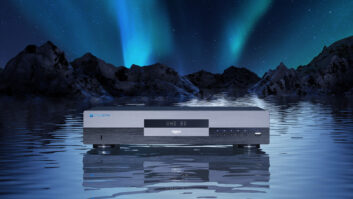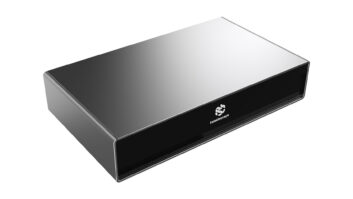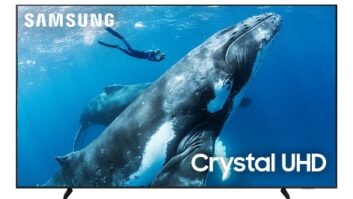Just a few short weeks after CES, Toshiba made the announcement that it was throwing in the towel on HD-DVD. Blu-ray Wins The Format War! was the banner headline in most of the popular and business press. Perhaps it has won for the short term, but in the long run was this a real win or a more of a pyrrhic victory?
The possibility of winning the battle, but losing the war, as suggested here in February, may well be the way that this all plays out once we have the benefit of greater hindsight from which to view the outcome of this latest consumer electronics format battle. In the mean time, it is worth taking advantage of this temporary lull in the action to examine the short- to mid-term outlook for optical disc and program distribution, in general, and Blu-ray in particular.
Do We Want Blu-ray?
For Blu-ray to really win it has to do more than bask in the fact that it sent HD-DVD packing. It has to prove that the mass market perceives that it needs, wants, and is willing to pay for a high-definition optical player. This needs to happen with the same volume with which DVD replaced VHS and Laser Disc. That may be possible, but merely eliminating one competitor doesnt mean that the road ahead is clear.
Some might say that the potent combination of high-definition 1080p video and lossless multi-channel digital audio, mixed in with a savory helping of interactive features is an undeniable quality leap that will win the day for Blu-ray. Using history as a guide, Betas acknowledged quality lead over VHS didnt help it win the day. Superior audio and video quality were among some of the reasons why Laser beat back the rival CED disc format, but that wasnt enough to best VHS. You might be able to easily see the difference. Some of your clients may be able to see the difference, but will the mass-market customer see it? Does the average viewer think it is worth the difference in quality to upgrade from their current progressive scan DVD player connected to an HDTV and already using Dolby Digital or DTS for discrete multichannel sound that looks great to me?
Price is a Factor
Its not just about quality, its about price. Particularly at a time when many see the economy on shaky ground, and with the February 17, 2009 analog shut-off looming just over the horizon, will there be any disposable income left for a new optical player? To overcome this obstacle, prices have to drop substantially. With DVD players widely available for well under $50, will average consumers buy new players for one, let alone many, rooms in the house when a Blu-ray player currently costs $299 in the best case?
Those in the popular press proclaiming that the end of the format battle would bring prices down were, for the moment, quite wrong. Why would manufacturers lower prices when your competitive formatthat was $100 below youhas gone out of the market? At least for now, there is nothing in sight that indicates that the major brands are suddenly going to lower their Blu-ray player prices. Components are simply too expensive, and the cost of everything is going up. Remember that you cant have low prices without high sales volume, but you cant get high sales volume until you have low prices.
At the bottom line, literally and figuratively, why would the manufacturers want to give margin dollars away when they dont have to meet competition from lower priced HD-DVD players anymore? These things are still expensive to make and have a boatload of royalties attached to them. Making costs worse, were still at the beginning stage of a new technology where the R&D costs probably havent been fully amortized and design costs are likely to be on the high side.
Pricing Factors
One thing that could lower prices would be the availability of entry-level products from the high-volume, commodity-oriented manufacturers in China. That would certainly drop prices, but the question is, when? It takes a complex stew of high-cost components and brand new software to build any Blu-ray player, let alone the Version 2.0 models that your clients will be clamoring for this season. Its not just the obvious blue-laser optical drives, but also the powerful, and still costly, semiconductors required to decode the various high-resolution audio and video data streams, HDMI version 1.3 chips, large amounts of memory, and ethernet connectivity.
In their mid-March earnings conference call, one of the major suppliers of processor chips for Blu-ray players predicted that well see $199 players by the end of this year. Sure, its possible that well see this happen by Black Friday, but it is equally possible that sub-$200 players will have to wait until 2009.
Driving Blu-ray player production and sales volume to the level where prices can drop in the mass market is important to those of us in the higher end of the consumer electronics market. Just as a rising tide raises all boats, lower prices for key components make it possible for a wider range of manufacturers to enter the Blu-ray arena at a broad range of prices and feature levels. To date there have been limited Blu-ray entries, other than from brands attached to major consumer electronics suppliers. Lower component prices and a wider range of factories experienced in the production of OEM and ODM products makes it more possible that well see players from brands more familiar in the specialist market some time within the next eight to 18 months. Without high volume at traditional retail, that could be problematic.
What many consumers also want before they buy into a new technology is the assurance that what they pay a premium for today will not become obsolete or cheaper right away. Today, that assurance isnt possible. Weve addressed pricing somewhat, and from the technology perspective, weve moved from 1.0 to 1.1/Bonus View, but 2.0/BD Live is just around the bend. Will people stay on the sidelines until they get both a low price and a stable platform? One more unknown, but the longer the mass market waits, the more competition an optical format may face from other technology competition.
The PS3 Influence
Playstation3 has the most potential for driving sales of Blu-ray players enough to reduce component costs. During the heat of the format battle, whether or not to count Playstation3 as a Blu-ray player sale was a bone of contention that, for the most part depended on which side you were on. Now that it doesnt matter, the answer is obvious: Playstation3 is a great Blu-ray player. Speaking from personal experience, when our resident game player is away at college the PS3s primary use is for movies.
Even better, it should be noted that PS3 does present an incredible value as a Blu-ray player even if you place it in a job for that purpose alone. Since the consoles introduction, it has been upgraded from the original Profile 1.0 to the Bonus View/Profile 1.1, and as we go to press Sony has announced that Version 2.20 of the systems software will bring compatibility with BD-LIVE/Profile 2.0. Along with that will come a resume play feature, the ability to use your PSP to serve as a remote for music played through the PS3, and a number of other performance improvements and feature upgrades. If all Blu-ray players had this level of system upgradeability it would a long-term player.
However, PS3 is a specialized product, and it is not be likely that its volume will help drive costs down for standalone players. On the other hand, lack of a Blu-ray player hasnt hurt sales of Xbox 360 (or, of course, Wii). Again, from personal experience, having an Xbox 360 in the house didnt make us run to get the external HD-DVD drive. There, the gaming, online experience, and downloadable content are the key. Yes, its possible that some future version of Xbox 360 might have Blu-ray built-in, but dont count on it, certainly not any time soon. They simply feel that it isnt needed.
Software Questions
To make Blu-ray a complete success, there also has to be a wide variety of software available. While the major studios are now obviously all on the Blu-ray bus, keep in mind that titles just dont appear over night. Particularly as more interactive features are added for Bonus View (formerly known as Profile 1.1) and for the even more advanced BD Live of Profile 2.0, authoring and mastering a title takes time and money. This means that it will likely be a while before there is a sufficient library of back-list catalog titles available in Blu-ray. Will that make a difference in the sales of the new players? Once more, its hard to tell.
One of the advantages of HD-DVD over Blu-ray was its ability to be replicated on pressing equipment after only minor adaptations, while Blu-ray requires either new, or significantly modified replication infrastructure. With all of the studios now on board, there may well be a short-term shortage of replication capacity. Will the companies who press optical discs make the significant investment needed to assure supply and then bring pricing for HD titles down to the level of todays standard DVDs? Even if they do, when will software pricing drop? Once again, a victory in the format battle doesnt mean an instant and clear-cut victory in the program distribution war.
In terms of software pricing, Blu-ray rentals are offered in most cases, including Netflix and Blockbuster, on par with standard DVDs. On the purchase side, however, Blu-ray titles typically run (at retail pricing) between $34.99 and $39.99. In some cases, such as I Am Legend, the price is within $1 between the HD version and the Special Edition in SD, but still $7 more than the basic version. In other cases, such as Juno, the HD disc is $5 more than the Special Edition and $10 more than the basic SD version. Of course, depending on where the software is purchased, this pricing may vary to the extent that one online merchant is offering some titles on pre-order in HD for less than the price of the Special Edition version in SD.
Competition from Downloads
Was HD-DVD really the competition, or will it be something else? Is it FIOS or U-Verse? Is it content from Netflix delivered first to your PC, and then directly to a TV? Is it streaming content piped directly to your TV as displays sprout Internet connectivity for IPTV services? Is it AppleTV or Vudu? Is it delivery of movie and other program content in HD to an Xbox 360 today, and perhaps a PS3 at some point in the future? Not any one of these right away, but remember that objects in that rear-view mirror are truly closer than they seem. It could be any or all of them, and sooner than you might think.
Ah, you say, but optical discs are portable. My answer is that its just a matter of time before Blu-ray playback appears in your cars dash or as part of a back seat entertainment system. Portable Blu-ray players cant compete today at the prices of small red-laser DVD players, but that is in the offing at some point. Or, as drive and chip prices drop, you may soon see the person in the seat next to you on that next transcon flight watching a Blu-ray movie on their laptop.
As pricing for solid-state memory drops at the same time that capacities for various storage drives increase, full HD on a player device based around solid-state can take the place of optical storage. No denying that today the cards are expensive, with SanDisks 16GB and 32GB SDHC cards due for availability this month at $179 and $349, respectively. On the other hand, lower prices are inevitable when you compare what a 2GB USB thumb drive cost only a year ago to the fact that SanDisk and NBC/Universal gave them away for free to CES attendees this year in support of their Fanfare download service.
Yes, HD downloadable content is still relatively rare and while streaming HD services can start playback instantly with some services such as Vudu, HD movie downloads can take quite a few hours with others or when bandwidth/throughput is restricted. However, as with Blu-ray itself, the barriers facing HD downloads to portable solid-state players are not so much technological as they are economic and time related.
Its all possible, but will consumers want it, purchase the needed hardware, and when will it come down in price? Hmm. That sounds just like the issues facing Blu-ray, doesnt it?
Fairness certainly dictates that that we once again say that Blu-ray has certainly won one format battle. However, a closer look says that it may now be involved in battles that may be harder to win. One is against the clock and calendar, as the cost/benefits of a high-definition optical disc format are judged by consumers in comparison to what they already have from their red-laser players and the vast library of software it offers. The other is the battle to gain ubiquitous status in consumers minds as the program acquisition and storage format of choice in the face of electronic downloads, local or off-site server-based storage, and portability via solid state products. If Blu-ray can win hearts, minds, eyes, ears and most importantly, pocketbooks and wallets before other technologies come down in price with content of similar breadth, depth and video/audio quality, its home free.
On the other hand, this is not a slam dunk. Take a deep breath and sell Blu-ray players for the considerable value they are today, but as always, make certain that your peripheral vision keeps an eye out for competition on a variety of fronts. The studios and manufacturers have a great deal to gain from Blu-rays success, and we fully expect them to take all the necessary steps to make it happen.
Michael Heiss ([email protected]) is an industry consultant in Los Angeles, California.







